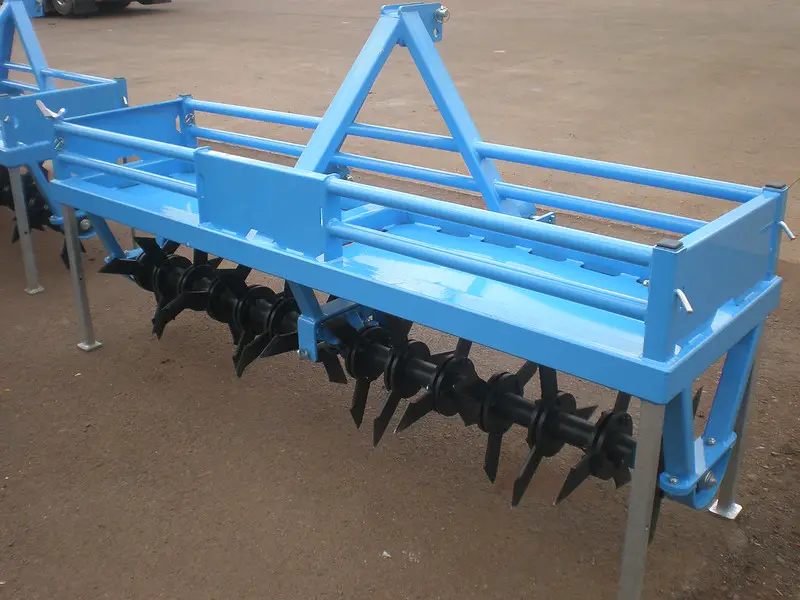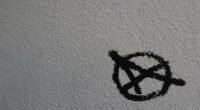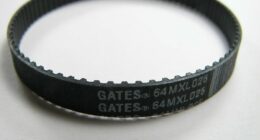Aerators and scarifiers are both essential tools for keeping your lawn healthy and looking great. Aerators will help you aerate the soil and improve drainage, while a scarifier will help remove thatch build-up to allow more oxygen, nutrients and water into the root zone of your lawn.
Aerator
(blastpaintrestore on Flickr)

An aerator is a lawn care tool that punctures small holes in the ground in order to allow air, water, and nutrients to reach the roots of the grass. Aeration can be done with a manual or motorized aerator.
Scarifier
A scarifier is a garden tool that is used to remove dead grass, moss, and thatch from lawns. Unlike an aerator, which punches holes in the ground to allow air and water to reach the roots of the grass, a scarifier actually cuts through the thatch and grass to remove it. This can be a very effective way to revive a lawn that has become too thick with thatch or dead grass.
How to choose the right tool for the job
Aerators are best for lawns that are compacted or have a lot of thatch. They punch holes in the ground, which allows water and nutrients to reach the roots of the grass. Aerators can be either manual or powered.
Scarifiers are best for lawns that have a lot of moss or dead grass. They remove the thatch from the lawn, which helps improve air circulation and drainage. Scarifiers can be either manual or powered.
What is a scarifier vs dethatcher vs aerator?
A scarifier is a machine that removes dead organic matter, moss, and thatch from turfgrass.
A dethatcher is a machine that removes thatch from turfgrass.
An aerator is a machine that punches small holes in the ground to allow air, water, and nutrients to reach the roots of turfgrass.
Should I aerate or scarify?
Aeration involves using a machine to puncture small holes in the soil. This helps to loosen up compacted soil and allow air, water, and nutrients to reach the roots of your grass. Aeration is typically done in the spring or fall.
Scarification involves using a machine with blades or teeth to remove thatch from the surface of your lawn. Thatch is a layer of dead organic matter that can prevent water and nutrients from reaching the roots of your grass. Scarification is typically done in the spring.
So, which process should you choose? If your lawn has a lot of thatch, scarifying may be the best option. If compacted soil is the problem, aerating may be the better choice. You may also want to do both!
Do I need an aerator or dethatcher?
If you have a lawn that is looking patchy and unhealthy, it might be time to invest in an aerator or dethatcher. But which one do you need? Here is a breakdown of the two pieces of equipment to help you make the best decision for your lawn.
An aerator is a machine that punctures holes in your lawn to allow air, water, and nutrients to penetrate the roots. This process can help to thicken your lawn and improve its overall health.
A dethatcher, on the other hand, is a machine that removes dead grass and debris from your lawn. This can help improve drainage and prevent thatch buildup, which can lead to problems like
When should I use scarifying?
If your lawn is looking patchy or has a lot of weeds, scarifying can help to improve its appearance. It can also be used to level out an uneven lawn.
Scarifying involves using a special garden tool to remove the thatch from your lawn. This thatch is a layer of dead grass, leaves, and roots that can build up over time. If it’s not removed, it can prevent new grass from growing and lead to a patchy lawn.
You should scarify your lawn once or twice a year, in the spring and fall. If you have a lot of thatch, you may need to do it more often.
What are two methods of aeration?
There are two primary methods of aeration: Spike aeration and Core aeration.
Spike aeration involves using a machine with small metal spikes that penetrate the ground and loosen up the soil.
Core aeration, on the other hand, removes small cores of soil from the lawn. This type of aeration is often considered to be more effective because it allows for better airflow and can also help improve drainage.
What is the purpose of a scarifier?
A scarifier is a garden tool that is used to loosen, aerate and remove thatch from lawns. It is a specialized type of rake that has metal teeth or blades that can penetrate deep into the turf. Scarifying helps improve drainage, reduce compaction, and encourage new growth.
What is the purpose of a aerator?
Aerators and scarifiers both have the same basic purpose: to help improve the quality of your lawn. However, they do this in different ways.
Aerators actually puncture small holes in your lawn so that air, water, and nutrients can reach the roots more easily. This helps to encourage a healthier lawn. Scarifiers, on the other hand, remove thatch and debris from the surface of your lawn. This helps to improve drainage and allows sunlight and air to reach the grass more easily.
What tool is used for aeration?
Aeration is the process of poking holes in compacted soil to allow air, water, and nutrients to penetrate the lawn and reach the root system. The most common tool used for aeration is an aerator, which is a machine that removes small cores of soil from the lawn. Aerators are available for rent at most home improvement stores.
What month should I scarify my lawn?
The best time to scarify your lawn is in the early spring, before new growth begins. This will help to remove any thatch that has built up over the winter and allow new growth to come through more easily.
What is the difference between raking and scarifying?
Raking involves using a Garden Fork or other similar tool to lift the thatch from the grass so that air and water can penetrate the roots more easily. Scarifying uses a mechanical device with blades or wires to scrape away the thatch build-up. This option is generally quicker and easier than raking, but it can be more damaging to the grass if not done properly.
Does scarifying remove weeds?
Yes, scarifying does remove weeds. However, it is important to note that not all weeds are removed with this method. Some of the more tough and deep-rooted weeds may still remain after scarifying has taken place.
Featured Image By – Photo by Petar Tonchev on Unsplash








